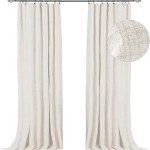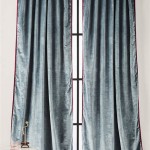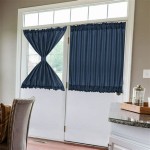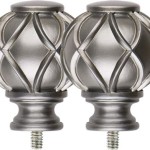Removing a Shower Door and Replacing it with a Curtain: A Comprehensive Guide
Replacing a shower door with a curtain is a common bathroom renovation project undertaken for various reasons, including aesthetic preferences, accessibility improvements, ease of cleaning, and cost savings. This article provides a detailed, step-by-step guide to safely and effectively removing an existing shower door and installing a curtain, ensuring a functional and visually appealing result.
Preparing for the Project
Before commencing the removal and replacement process, meticulous preparation is crucial. This involves gathering the necessary tools and materials, ensuring adequate safety measures are in place, and understanding the existing shower door's construction.
Tools and Materials: The following tools are typically required for this project: a screwdriver set (including both Phillips head and flathead drivers), a utility knife, a caulk removal tool or a razor blade scraper, a drill with various drill bits, a measuring tape, a level, a stud finder, safety glasses, work gloves, a bucket or container for debris, cleaning supplies (such as all-purpose cleaner and a sponge), a new shower curtain rod, a shower curtain, shower curtain rings or hooks, and silicone sealant or caulk.
Safety Precautions: Safety is paramount when working with tools and potentially sharp objects. Always wear safety glasses to protect the eyes from debris and work gloves to protect the hands from cuts or abrasions. Exercise caution when using a utility knife or razor blade scraper to avoid injury. If the shower door contains tempered glass, be aware that it can shatter into small pieces if mishandled. Ensure adequate ventilation in the bathroom during the removal process and when applying sealant or caulk.
Understanding the Existing Shower Door: Before attempting removal, carefully examine the shower door's construction. Most shower doors are attached to the shower frame or wall using screws, brackets, or adhesive. Identify the type of fasteners used and the method of attachment. Note the presence of caulk or sealant around the doorframe, as this will need to be removed before the door can be detached. Understanding the door's construction will inform the removal strategy and prevent damage to the surrounding surfaces.
Removing the Shower Door
The shower door removal process requires a systematic approach to ensure a safe and efficient outcome. This typically involves several steps, beginning with the removal of door components and culminating in the removal of the door frame itself.
Removing Door Components: Start by removing any removable components, such as handles, knobs, or decorative trim. These are usually attached with screws or clips. Use the appropriate screwdriver or tool to detach these components and set them aside. Next, detach the door from its hinges or rollers. Depending on the door's design, this may involve lifting the door off its hinges, sliding it out of its rollers, or disconnecting it from its support brackets. Enlist the help of another person if the door is heavy or unwieldy to prevent accidents.
Removing Caulk and Sealant: Once the door is detached from its frame, the next step is to remove any caulk or sealant that is securing the frame to the wall or shower enclosure. Use a caulk removal tool or a razor blade scraper to carefully cut along the edges of the caulk, separating it from the wall surface. Apply gentle pressure to avoid damaging the underlying tile or wallboard. For stubborn caulk residue, consider using a caulk remover solvent according to the manufacturer's instructions. Ensure adequate ventilation when using solvents.
Removing the Door Frame: With the caulk removed, the door frame should now be free to detach from the wall. Identify the screws or fasteners that are holding the frame in place. Use the appropriate screwdriver or drill bit to remove these fasteners. If the frame is also adhered with adhesive, gently pry it away from the wall using a pry bar or putty knife. Work slowly and carefully to avoid damaging the surrounding surfaces. Once all fasteners have been removed, carefully lift the door frame away from the wall. Dispose of the old shower door and frame responsibly.
Cleaning the Area: After removing the shower door and frame, thoroughly clean the surrounding area. Remove any remaining caulk residue, adhesive, or debris. Use an all-purpose cleaner and a sponge to clean the surfaces of the wall and shower enclosure. Pay particular attention to areas where caulk or adhesive was previously applied. A clean surface will ensure proper adhesion of the new shower curtain rod and prevent the growth of mold or mildew.
Installing the Shower Curtain Rod
The installation of the shower curtain rod is the final step in the process. This requires careful measurement, proper alignment, and secure attachment to the wall.
Measuring and Marking: Use a measuring tape to determine the desired height of the shower curtain rod. The typical height is approximately 75 to 78 inches from the floor, but this may vary depending on the length of the shower curtain. Mark the desired height on the wall using a pencil. Use a level to ensure that the marks are horizontally aligned. The distance between the marks will determine the length of the shower curtain rod that is needed.
Locating Wall Studs: Use a stud finder to locate the wall studs behind the drywall or tile. Attaching the shower curtain rod brackets to wall studs will provide the strongest and most secure installation. If wall studs are not available in the desired location, use drywall anchors or molly bolts to provide adequate support.
Installing the Brackets: Position the shower curtain rod brackets on the wall at the marked locations. If attaching to wall studs, align the bracket screws with the stud and use a drill or screwdriver to secure the brackets in place. If using drywall anchors or molly bolts, drill pilot holes according to the anchor manufacturer's instructions. Insert the anchors or molly bolts into the pilot holes and tighten them until they are securely fastened to the wall. Then, attach the brackets to the anchors or molly bolts using screws.
Attaching the Shower Curtain Rod: Once the brackets are securely installed, insert the shower curtain rod into the brackets. Most shower curtain rods are adjustable in length, so adjust the rod to fit the space between the brackets. Secure the rod to the brackets using the provided screws or clamps. Ensure that the rod is level and securely attached to the brackets before proceeding.
Hanging the Shower Curtain: With the shower curtain rod in place, attach the shower curtain rings or hooks to the rod. Thread the shower curtain onto the rings or hooks and evenly distribute it along the rod. Ensure that the shower curtain hangs properly and covers the entire shower enclosure. Trim the bottom of the shower curtain if necessary to prevent it from dragging on the floor.
Sealing and Finishing
Once the shower curtain is installed, it's essential to seal any gaps or cracks around the shower enclosure to prevent water damage and maintain a clean, finished look.
Applying Silicone Sealant or Caulk: Inspect the perimeter of the shower enclosure for any gaps or cracks between the tile or wallboard and the shower pan or tub. Use silicone sealant or caulk to seal these gaps. Apply a bead of sealant or caulk along the gaps, ensuring that it fills the space completely. Smooth the sealant or caulk with a wet finger or a sealant smoothing tool to create a clean, professional finish. Allow the sealant or caulk to dry completely according to the manufacturer's instructions before using the shower.
Cleaning Up: Once the sealant or caulk has dried, thoroughly clean up the work area. Remove any tools, materials, or debris. Wipe down the surfaces of the shower enclosure and the surrounding bathroom area. Dispose of any waste materials properly. A clean work area will enhance the visual appeal of the finished project and prevent accidents.
Maintenance and Care
Maintaining the shower curtain and enclosure is crucial for preventing mold and mildew growth, extending the lifespan of the curtain, and ensuring a clean and hygienic bathroom environment.
Regular Cleaning: Clean the shower curtain regularly to remove soap scum, mildew, and other buildup. The shower curtain can be cleaned by wiping it down with a damp cloth and a mild detergent or by machine washing it according to the manufacturer's instructions. Regularly clean the shower walls and floor to prevent the growth of mold and mildew. Use a bathroom cleaner specifically designed for this purpose.
Ventilation: Ensure adequate ventilation in the bathroom to prevent moisture buildup. Use the bathroom exhaust fan during and after showers to remove excess moisture from the air. Open a window if possible to further improve ventilation. Proper ventilation will help to prevent the growth of mold and mildew.
Replacing the Shower Curtain: Replace the shower curtain periodically to maintain a fresh and hygienic bathroom environment. The frequency of replacement will depend on the quality of the curtain and the level of use. Signs that a shower curtain needs replacing include excessive staining, mildew growth, or damage to the fabric.

Removing The Shower Door Breaking Ground In Master Bathroom

Goodbye Dirty Shower Doors Full Time Rv Life

Removing Sliding Glass Shower Doors Flashback Friday The Kim Six Fix

Removing The Shower Door Breaking Ground In Master Bathroom

How To Remove Shower Doors And Frame Youtube

How To Remove Glass Shower Doors Diy Caitlin Marie Design

Shower Door Vs Curtain Which Is Right For My Bathroom

How To Remove Glass Shower Doors Diy Caitlin Marie Design

8 Replacing Shower Door With Curtain Ideas Glass Doors

How To Remove An Old Sliding Shower Door Young House Love








